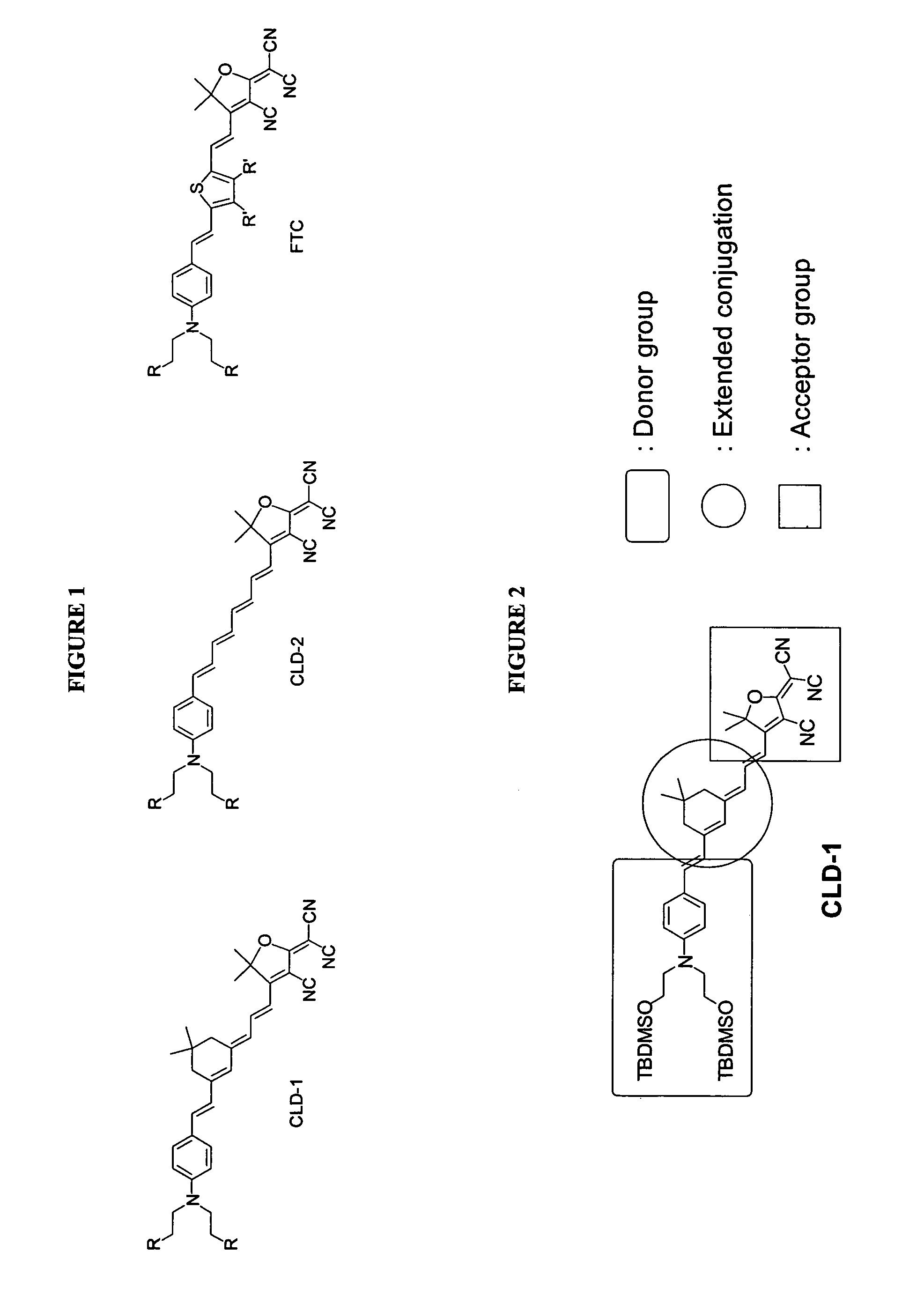Reverse synthetic methods for making organic non-linear optical materials
a nonlinear optical and organic technology, applied in the general field, can solve the problems of low yield, higher overall cost, and insatisfactory conventional synthetic strategy for preparing organic nonlinear optical chromophores
- Summary
- Abstract
- Description
- Claims
- Application Information
AI Technical Summary
Benefits of technology
Problems solved by technology
Method used
Image
Examples
example
[0028]The synthesis illustrated in FIG. 6B is conducted as follows:
Synthesis of 6B-2
[0029]A three-necked round-bottomed flask of suitable size is equipped with a Teflon-coated magnetic stirrer and a dropping funnel. The complete setup is flame-dried using a Bunsen burner, while continuously flushed with dry nitrogen, using two needles through septa as inlet and outlet for the gas stream. The nitrogen flow is continued during the complete reaction until aqueous work up. The flask is loaded with a mixture of 13.3 g (1.55 equiv.) of dry diethyl (cyanomethyl)phosphonate and approximately 100 mL dry tetrahydrofuran (THF). The solution is cooled to −78° C., and via a syringe, 1.5 equiv of 1.6 M butyllithium in hexanes is slowly added and the mixture is stirred for 15 min. At this temperature, 6.9 g (1.0 equiv) of dry isophorone 6B-1 in 20 mL of dry THF is added via the dropping funnel. The mixture is allowed to warm to room temperature and stirred for 2 hours. To quench anions, a saturate...
PUM
| Property | Measurement | Unit |
|---|---|---|
| glass-transition temperature | aaaaa | aaaaa |
| temperature | aaaaa | aaaaa |
| non-linear optical | aaaaa | aaaaa |
Abstract
Description
Claims
Application Information
 Login to View More
Login to View More - R&D
- Intellectual Property
- Life Sciences
- Materials
- Tech Scout
- Unparalleled Data Quality
- Higher Quality Content
- 60% Fewer Hallucinations
Browse by: Latest US Patents, China's latest patents, Technical Efficacy Thesaurus, Application Domain, Technology Topic, Popular Technical Reports.
© 2025 PatSnap. All rights reserved.Legal|Privacy policy|Modern Slavery Act Transparency Statement|Sitemap|About US| Contact US: help@patsnap.com



